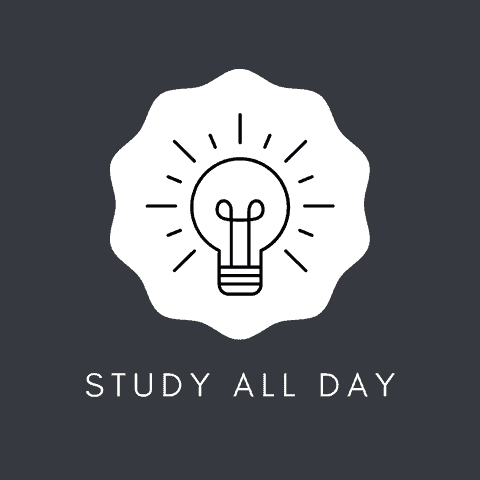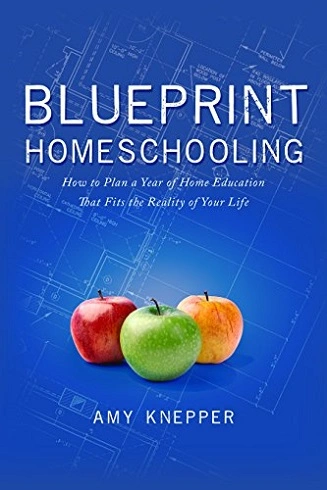| Title | Blueprint Homeschooling |
| Author | Amy Knepper |
| Publisher | Park Day Publishing |
| Year | 2014 |
| Pages | 200 |
| Rating | ★★★★★ (5 stars) |
| Purchase Link | Buy Here |
Blueprint Homeschooling is a parent’s guide to homeschooling your children. The author has been raising two children for years and has many important tips to give. Read more book summaries here.
What is the Homeschooling Blueprint Review?
In this book, Amy Knepper teaches how to plan a year of teaching children in homeschooling, from the first (more general) steps to the specific ones.
First, Knepper suggests two levels of reading the book: a simpler one, just to understand the book in general; and a more detailed one, doing the exercises taught in the work.
In this way, at the end of this second reading, you already have a planned study itinerary.
However, as I don’t have children, I only did the first reading and I will talk about the book from this perspective.
In fact: it would not make sense to talk about the more detailed reading, since this is very specific. You can buy the book by clicking here.
Who is the author of Blueprint Homeschooling?
The author of Blueprint Homeschooling is Amy Knepper, a mother who has been homeschooling her two children for years and is very experienced in the field.
What are the Main Lessons of Blueprint Homeschooling?
The main lessons of Blueprint Homeschooling are:
1. Define your family’s values
First, you need to define your family’s values.
For example: why did I choose homeschooling? How important is this for my family members?
In fact, all of this should be thought about and written down somewhere visible so that you remember your purpose in homeschooling your children.
Thus, she even suggests making some pictures or panels detailing family values.
In fact: it is quite curious to note that family members can use homeschooling for different reasons.
She points out other very important reasons: the child may have special needs, may be bullied or just have greater contact with the teaching of their children.
2. Define which Educational Methods you are going to use
Secondly, you need to define the most appropriate methods to teach your children.
The writer of the book in question has two children, both with special learning needs, and needs to break her head to define the best way for them to study.
In the same way, parents can choose ways that they feel are more efficient to teach their children, depending on their natural aptitudes and difficulties.
In fact: this is important because it makes us note that, unlike the educational system, home education allows for the personalization of teaching.
Therefore, respecting the children’s pace and choosing the right methodologies make homeschooled children have great academic results. Read a summary on “How to Read a book” here!
3. Prepare Your Children for Life
Third, you need to look at the big picture.
In fact: more important than teaching the subjects of a certain school year, the important thing is to prepare your children to be good adults, responsible and autonomous people.
Therefore, you can direct the studies according to the interests of each child, taking into account that these may well reflect on their professional choices.
Ultimately, you will not only be teaching content here, but also values and a quest for knowledge that will continue for a lifetime.
4. Set clear goals
In addition, we should set goals: what do I intend to have taught my children after a year of study? Where will they be compared to where they are now?
However, do not make idealizations or plans that you know will not work out.
That is: it is necessary to set realistic goals, so as not to be disappointed, and measurable ones, to know the level of progress.
5. Divide Matters into Essentials and Non-Essentials
The author moves on to the more practical part of the process, which begins with the choice of disciplines.
In this way, Knepper divides the disciplines into the essential ones, which cannot be set aside, and the others, which during periods when routine is difficult to maintain, can be approached with less fervor for a while.
In fact: this division is essential for realistic planning, since changes of residence, death of a family member and other eventualities may occur.
6. You Won’t Always Be Motivated
One thing is true: the educator also states that there are periods when no one feels motivated to study, not even parents, and that even in these cases it is important to maintain some kind of basic activity.
7. Choose your Curriculum
After choosing the disciplines, then comes the choice of curriculum. The book cites several ready-made resumes that are marketed in the US.
In fact: in some countries, we don’t have as many focused materials for homeschooling, so you will very likely need to build your own curriculum.
In my opinion, the writer is a bit exaggerated, buying several books and renting others in the city library, but I believe it is possible to gather the material without needing so much effort. You can buy the book by clicking here.
8. Select the Appropriate Materials
I imagine that it is interesting to look for good books in used bookstores, because it is possible to find very attractive prices.
In this way, the author recommends, for science, the use of university books, removing the part of the accounts, so that the content becomes simpler.
Also, let’s not forget about the free tools present on the internet today, such as Duolingo and Khan Academy.
9. Plan Your Child’s Year of Studies
In fact, this is a more complex part: planning the year of studies, dividing it into months and then into weeks.
Thus, the book recommends using 180 school days, divided into a total of 36 weeks, but there are parents who make different plans and even those who teach throughout the year.
In addition, she divides the content into a little less than weeks, already taking into account possible eventualities. Read a summary about The Intellectual Life here!
Thus, the division of content for each period can be done by units or number of pages in a book, content addressed, among others.
Although it may be difficult to plan an entire year with such accuracy, it is possible to make half-yearly plans or in the way that the parents deem most appropriate, without taking into account the objectives to be achieved by the children.
10. Review your Priorities
Still, a phase that will be necessary throughout teaching is the constant review of priorities, contents and goals.
So, after a week or two half lost after a bad period, parents will need to reorganize and get back on track so as not to compromise their children’s education.
Finally, the author recommends weekly reviews to avoid getting too far off track.
11. Live with other Homeschool Families
Finally, the educator recommends getting in touch with other homeschool parents, and forming groups of parents who educate their children at home and who have common values.
In addition, she also emphasizes the importance of parents continuing to study things on their own, in order to encourage their children.
How to study Science in Homeschooling?
Following the instructions of The Well Trained Mind, Knepper divides these subjects that were divided into cycles of 4 years each.
These cycles are repeated 3 times, each time with subjects addressed in a more complex way. The first year for biology, the second for chemistry, the third for physics and the fourth for earth sciences.
Earth Sciences are nothing more than applications of the three sciences on our planet. That is: we study relief, hydrography, vegetation and other aspects of physical geography.
How to study History in Homeschooling?
Still following the instructions of The Well Trained Mind, the author divides the story into cycles of 4 years each. They repeat 3 times, each time deepening. The first year for ancient history, the second for middle ages, the third for modern history and the fourth for contemporary history.
That is: it is possible to approach the entire history of humanity at different levels of depth, according to the age of the children.
Is Blueprint Homeschooling practical?
In fact: in the US, the country where the book was written, there is specific legislation for homeschooling, requiring a series of processes to be followed, such as mandatory tests every year.
However, in some countries, homeschooling is not allowed or is not regulated, making it complex to put into practice.
Therefore, it is necessary to know the legislation on homeschooling in your region in order to apply it correctly.
To know more about the problems of modern education, read a summary on Dumbing us Down, very important book here.
Is Blueprint Homeschooling worth reading?
Finally, it is worth noting that this work is extremely important to help parents who are confused about homeschooling. It is a mandatory book to read and consult always, if you want to educate children at home.
Despite the author being a little too methodical in some planning, I believe that a lot of useful content can be extracted from this material, adapting it to the reality of our country.
If you want to buy Blueprint Homeschooling, it’s worth checking out! You can buy the book by clicking here.

